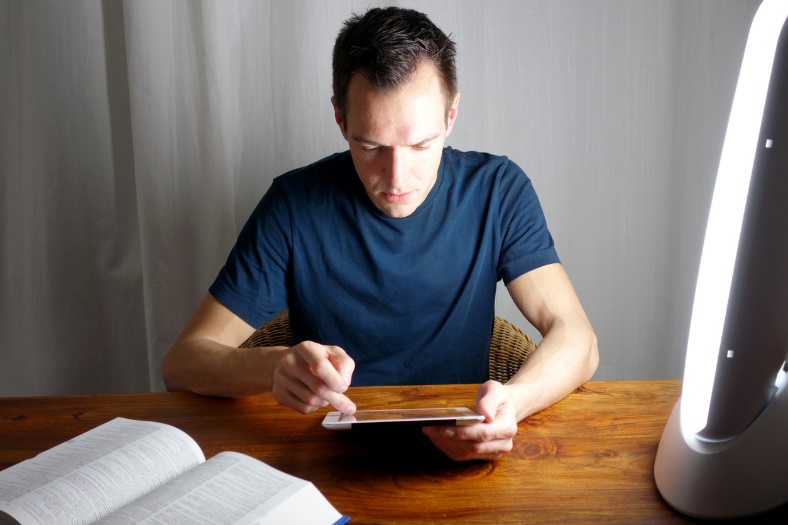Treatments are Available for the So-called Winter Blues
As we move toward winter with shorter daylight hours and falling temperatures, many people begin to feel the cloud of seasonal depression.
Seasonal affective disorder (SAD) is a form of depression that occurs seasonally, typically in the winter months. SAD is not just the winter blues – SAD is a subtype of major depressive disorder. It can also occur during summer, but it is much less common that time of year.
Many of the symptoms are similar to major depression, but they are only experienced for part of the year. Symptoms include sustained depressed mood for more than two weeks; feeling sad, hopeless or irritable; changes in appetite; difficulty sleeping or sleeping too much; lack of energy; and loss of interest in typically enjoyable activities. However, there are some differences between the two disorders. Compared to people with major depression, people with SAD tend to oversleep rather than have insomnia, tend to be more lethargic rather than irritable, and may especially crave carbohydrates.
SAD affects an estimated one in 20 adults. However, the percentage is greater among people living further north. An estimated 1% of people in Florida compared to 2-6% in Canada and 9% in Alaska experience SAD. Women are four times more likely to experience SAD than men.
 Treatments are available and effective. The most common is bright light therapy. Antidepressant medication and counseling/therapy are also effective in treating SAD and the treatments can be used in combination. Unfortunately, people often do not get treatment. For example, among patients recruited for a study of SAD, nearly 60 percent had never been treated.
Treatments are available and effective. The most common is bright light therapy. Antidepressant medication and counseling/therapy are also effective in treating SAD and the treatments can be used in combination. Unfortunately, people often do not get treatment. For example, among patients recruited for a study of SAD, nearly 60 percent had never been treated.
Bright light therapy has been used for more than 30 years to treat SAD and offers several advantages—it is well-established, non-invasive, has minimal side-effects, and is fast-acting. People often see improvements in symptoms within a week. Light therapy is used daily – using a light box emitting white light (10,000 lux, about 20 times brighter than ordinary indoor lighting).
The person typically sits about 16 to 24 inches from the eyes to the light box, with their eyes open, but not staring at the light. It is typically used for about 20 to 30 minutes day, but the person can be doing other activities during this time, such as reading, watching TV, eating, working on a computer. It is generally recommended to use the light early in the morning shortly after waking. Consistent daily use is important for it to be effective. Light therapy boxes for SAD are different than those used to treat skin conditions such as psoriasis. The SAD light boxes do not emit ultraviolet light (which can be damaging to the eyes and skin).
You can purchase a light therapy box without a prescription, but it is best to work with your doctor or mental health professional to help ensure you use it safety and effectively.
One variation on light therapy is referred to as dawn simulation. As the name implies, it mimics dawn beginning with a very low-level light while the individual is still asleep and gradually increases to room light level (using a regular bedside lamp, about 250 lux) over about 30 to 90 minutes. It is timed to end at the person’s wake up time.
A study comparing the use of bright light therapy and dawn simulation found them overall similarly effective. Some people with more severe depression found the bright light more effective. Some people preferred the dawn simulation because it saved time (no sitting in front of a light), the device was more compact and it was a more "natural" action.
Antidepressant medication, fluoxetine in particular, is also used to treat SAD. Counseling, specifically cognitive behavior therapy, is also effective in addressing the symptoms of SAD. In addition, several lifestyle changes can also help, including a healthy diet, regular exercise, increased time spent outdoors, and mindfulness and other stress-reduction techniques.
References
- Melrose, S. Review Article: Seasonal Affective Disorder: An Overview of Assessment and Treatment Approaches. Depression Research and Treatment. Vol 2015, Article ID 178564.
- Pirek, E., et al. The Efficacy of Light Therapy in the Treatment of Seasonal Affective Disorder: A Meta-Analysis of Randomized Controlled Trials. Psychother Psychosom. 2019 Oct 1:1-8. [Epub ahead of print]
- Danilenko K, Ivanova I. Dawn Simulation vs. Bright Light in Seasonal Affective Disorder: Treatment Effects and Subjective Preference. J Affect Disord. 2015 Jul 15;180:87-9.
- Cools, O, et al. Pharmacotherapy and nutritional supplements for seasonal affective disorders: a systematic review. Expert Opin Pharmacother. 2018 Aug;19(11):1221-1233.
